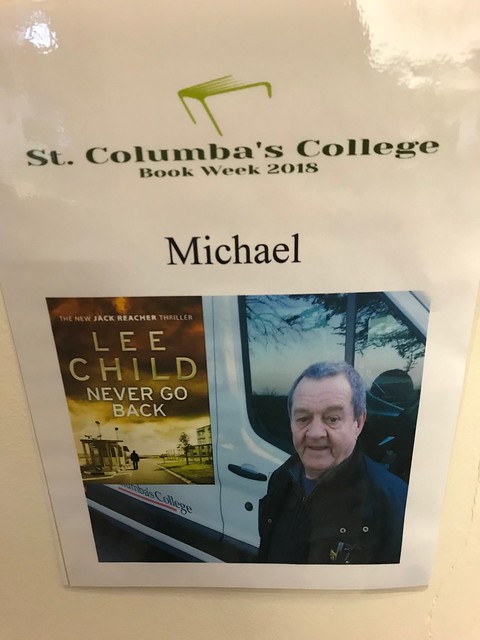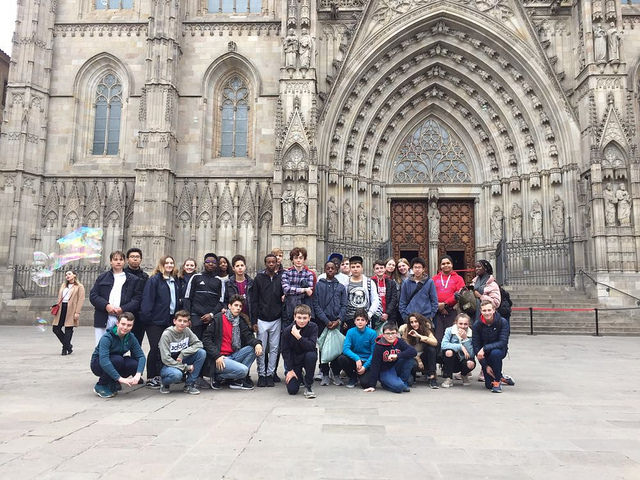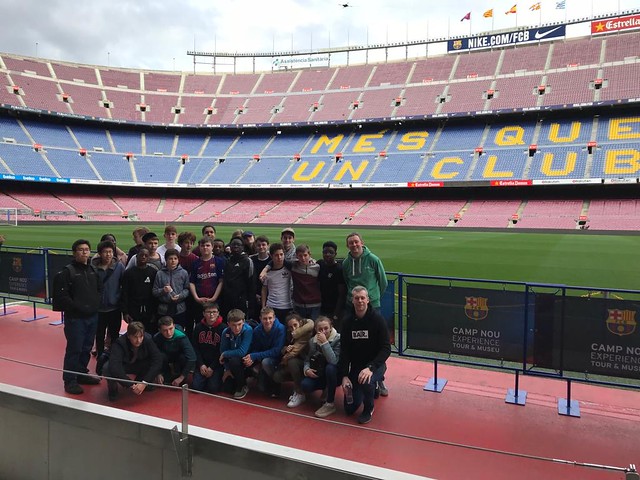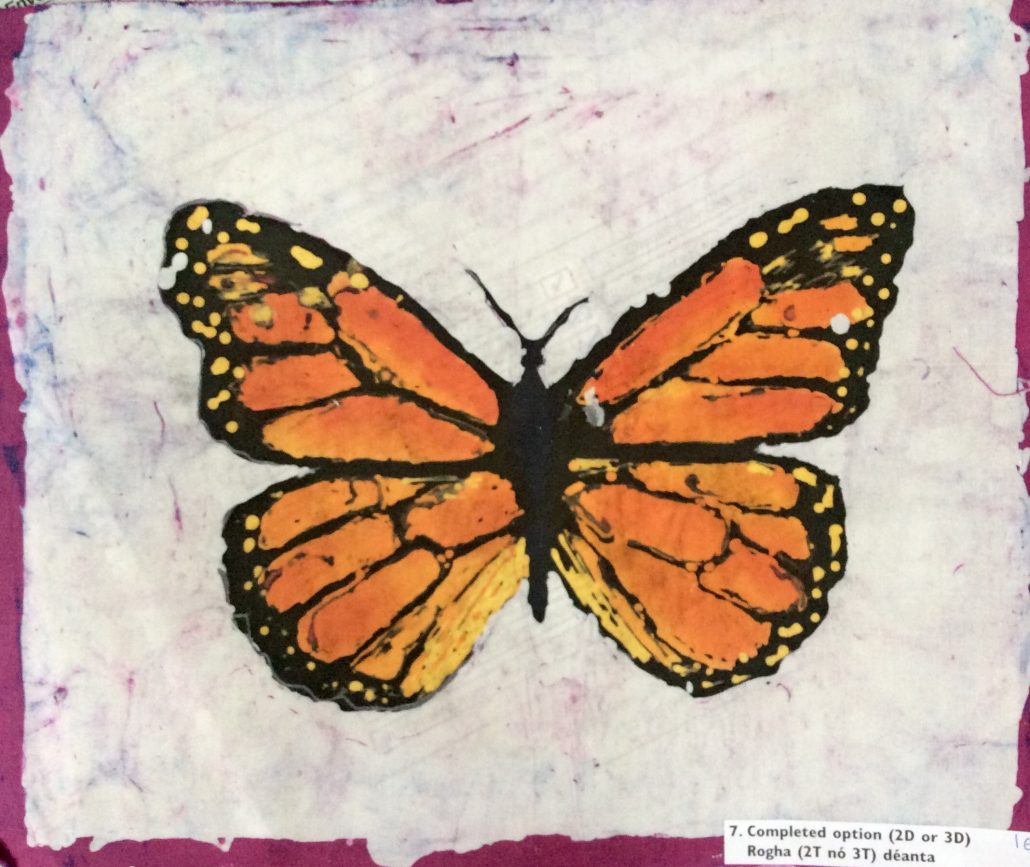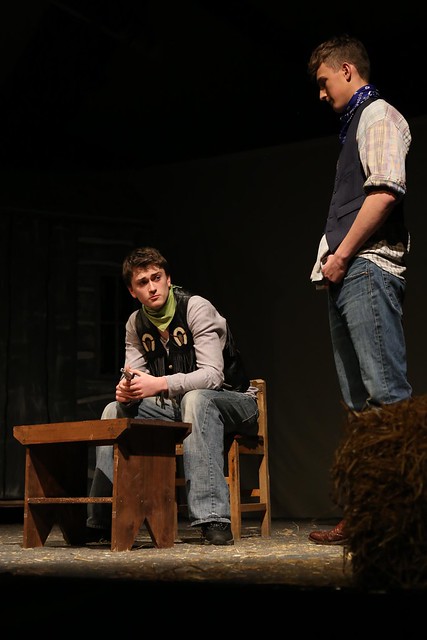Yesterday we kick started our first ever Book Week at St. Columba’s, an initiative of the librarian Jean Kent Sutton and the English Department. Running from the 1st to the 8th of February, there are a series of events and initiatives to promote reading for pleasure through a range of activities including a ‘favourite book’ raffle, ‘book in a jar’, a library quiz and (for the junior forms) book speed dating. The library will be open every day during break and lunch-time and, on Saturday morning, staff and pupils are invited to bring a book of their choice into class for ‘Drop Everything And Read’. Various walls and doors walls around the school will be decorated with posters featuring staff members’ choices of favourite books (pictured above). Be sure to follow our Twitter and Facebook pages for updates and photos from the week’s events.
Last weekend thirty junior pupils travelled to Barcelona to experience and culture (and do some geography fieldwork) in one of Europe’s most wonderful cities. Form I pupil Marco Trolese reports on what was a most enjoyable and interesting trip for everyone.
Very very early on the morning of Thursday 25th January, thirty excited pupils left St Columba’s for the cultural trip to Barcelona. We had a full itinerary organised for four days from Geographical sites to Architecture, History and experiencing Catalan culture. On the walking tour of the city we learnt a lot about the history of Barcelona. We walked through the streets of this fantastic city each day. One day we clocked up close to 17KMs!
The Sagrada Familia by Gaudi was so overwhelming and the building is expected to be completed 2026. All the tiny intricate details are very impressive, as was the stained glass windows and skylights. This was definitely my highlight of the trip. Park Guell has some beautiful sites and the architecture is so colourful with the mosaic tiles. This was where the richest people in the city lived, and you could see why. Barcelona’s aquarium was good and it was impressive to walk through the glass tunnel with the all the fish swimming around us.
The tour of Barcelona’s home stadium, Camp Nou, was interesting because we got to see the history of the team and achievements in the past. The football team clearly means a lot to the city. We were fortunate to have tickets to watch Barcelona play at home against local city rivals Espanyol in the Quarter Final of the Copa del Rey. What a great atmosphere – it was fantastic to see Barcelona’s 2-0 win. We also paid a visit to Montjuic where the Olympics were held in 1992. This gave us a fantastic view over the city in a nice area. The Olympic stadium was based here.
For the geographical study we went on a field trip to Sitges which is 30 km from Barcelona. Here, we learnt about coastal landforms and erosion. The weather was bad with rain pouring down on top of our makeshift ponchos (bin liners!). We completed a pebble study which linked to our coastal geography work in school. We got to discuss longshore drift, erosion and deposition. This helped to understand these processes.
Barcelona is a sustainable city and was the first city in the world to be awarded Biosphere certification. You could see why it’s considered sustainable with many solar panels, excellent public transport and city bikes calling ‘bicing’. After long busy days we were able to enjoy local cuisine and evening activities. We had an evening of competitive ten-pin bowling. The Lazer Tag game was an adrenalin filled competition with each team winning a game.
I would like to thank Mr Duffy, Mr Stevenson and Ms Harrahill for a very organised trip, which was so enjoyable and memorable. Overall this was a fantastic experience. Marco Trolese, Form I
This year’s Junior Play is a short one (rehearsal time has been particularly limited this term): Lady Gregory’s Spreading the News, first produced in 1904, a classic of the Irish one-act canon which tells the tale of small town citizens on a normal fair day allowing their gossip and imaginations run riot…
There are two performances, and parents are welcome at both: Friday 2nd and Saturday 3rd February in the Big Schoolroom at 7.15pm (performances should be over by 8pm). No booking is needed.
The Cast:
Mrs. Tarpey – Emily McCarthy
Mrs Fallon – Aurora Higgins Jennings
Bartley Fallon -Tadhg Rane O’Cianain
Jack Smith – Nikolai Foster
Mrs. Tully – Elizabeth Hart
James Ryan – Jamie Green
Shawn Earley – Florian Zitzmann
Bridey Casey – Emma Hinde
Magistrate – Caleb Swanepoel
Garda Joe Muldoon – Guy Fitzgibbon
(Please note that this event has been switched to the Big Schoolroom at 10.30am on Thursday 25th, since Sixth, Fifth and Fourth Formers will also be attending).
The Parents’ Association is delighted to announce that we have arranged an informative presentation for our parents which will take place next Thursday, 25 January 2018 at 10.30am in the Big Schoolroom. Our guest speaker will be Professor Donal O’Shea, HSE Clinical Lead for Obesity.
Professor O’Shea is a consultant endocrinologist and physician based in St. Vincent’s University Hospital and St. Columcille’s Hospital. Qualified from University College Dublin in 1989, he moved to Hammersmith Hospital in London and was awarded a Wellcome Trust Training Fellowship to study how the brain controls appetite. Since 1999, he has been the lead clinician for a hospital-based multi-disciplinary obesity service that includes bariatric surgery. In recent years he chaired the health impact assessment group on the potential benefits and harms of a tax on sugar-sweetened drinks and co-chairs the Royal College of Physicians Policy Group on Obesity. He is a regular commentator on the importance of preventing overweight and obesity, advocating for changes in how nutrient poor, energy dense food is promoted and marketed to children and young people as well as the need to re-engineer regular physical activity into everyday life.
As Clinical Lead for Obesity, Professor O’Shea works with the HSE Healthy Eating Active Living Policy Programme. A key focus of the role is the development and integration of evidence based models of care that strengthen prevention, early intervention, treatment for overweight and obesity across primary care and acute services for both children and adults.
The talk will be followed by a Question and Answer session and then our regular Coffee Morning will take place in the Lower Argyle, giving parents the opportunity to chat and catch up before collecting their children for the Exodus weekend.
We are very pleased to have been able to secure Professor O’Shea as a speaker and really hope to see a good crowd there to listen to what he has to say. We are confident it will be an extremely informative event.
Janine Jamieson, Chairperson of the Parents’ Association.
Monday 8th January
- Staff meetings in morning and afternoon.
- Boarders return to school between 6.30pm and 8.30pm.
- 8.30pm: Roll-call in House for all boarders.
Tuesday 9th January
- 8.50am: day boys and girls report.
- 8.55am: first Chapel bell. Assembly after Chapel.
- Afternoon classes on Summer Timetable today only (day boys and girls may leave at 3.35pm).

The first edition of the new-format magazine called The Submarine is now out. Check it out here, or look at it in ‘flippable’ form on the English Department site here.
Caoimhe Cleary was Editor; Tania Stokes illustrated; and there were impressive contributions made by many other pupils, both artistically and as writers. You can see the video ‘Missing You‘ by Tiernan Mullane below.
Last week, Transition Year pupils from the College hosted a workshop on genetically modified organisms (GMOs) with pupils from Nøtterøy High School in Norway. This was the fourth time Nøtterøy High School have visited the College in as many years and each year a new area of science is explored and debated using a collaborate approach to learning.
The day began with the pupils being divided into nine teams, with pupils from both schools on each team. A few icebreaker challenges allowed the teams get to know one another before the real work kicked off. Our first such challenge was a construction activity where each team had to suspend a plastic cup in the air, hanging from a structure made only from straws and tape.
The pupils were given a short presentation and shown a video about genetically modified organisms, learning about the positives and negatives of GMOs. Later the pupils participated in a variety of collaborative activities which helped them learn about different types of GMOs, and the advantages of each.
After lunch, each team had to design their own GMO, and present and pitch their new product to the group. There were some very creative ideas, such as chocolate with added iron, and a Crale (mix between a crab and a whale) which filtered microplastics from the ocean. The winner of this activity was the Pineango, a mix of genes between a pineapple and a mango, allowing people to absorb vitamins more easily from their food and reduce teenage acne. In all it was another highly successful and enjoyable collaboration between two very different schools, once again organised by Ms Hennessy. One pupil remarked:
This was a very beneficial experience and we learned a lot about collaboration and teamwork, as well as some interesting facts and information about GMOs.
Abigail O Brien, Transition Year, reports on the upcoming Art Exhibition of the work produced for the Junior Certificate 2017
Last year 23 pupils in 3rd Form completed the Junior Certificate Art Project. Each of us had to put together a number of finished art pieces. The themes we worked on ranged from sharks to space travel. However, a major part of the project also required that we show our preparatory sketches and brainstorming, alongside explanations of our individual thought processes.
The course is pretty straightforward – we had to make a 3D construction or sculpture, a painting or graphic design, and an optional third craft piece (calligraphy, puppetry, batique, a lino cut, and a host of other things). The challenge came in trying to complete all of this work in the time frame and to a standard which was strong enough.
A big part of the project was to show how our ideas developed over time. The big difference between this project and sitting a one hour portrait exam is that your ideas have a lot more time to evolve and grow. Despite drawing inspiration from a common theme throughout the three pieces, many of us were surprised at how varied the results were. In addition to the project we had to do a drawing exam. We had a model sit for us while we drew them and we also had to choose an object from a set list to draw. We were given an hour for both.
All of us worked well over the year and were all happy with our results. I think it was a very good experience and an opportunity to express our ideas.
This coming Sunday December 10th, there will be an opportunity to view our work as it will be displayed in the BSR for all to see after the evening Carol Service. We hope that you can make it!
Here are a small selection of pieces on display.
Saturday 9th December
- 8.15pm: Christmas Concert, BSR (parents are welcome to attend).
Sunday 10th December
- 10am: Matins
- 7.30pm: roll-call for VI, V and choir before the Carol Service.
- 8pm: Carol Service, followed by reception in the BSR.
- 9pm: exeats end for boarders not at the Carol Service.
Monday 11th December
- Special late rising due to Convention.
- Day boys and girls report by 10.25am (they may come earlier)
- 10.30am: First Chapel bell.
Thursday 30th November 2017
- White Chapel (St Andrew).
- Exodus starts after the end of the final examination, mid-morning.
Sunday 3rd December 2017
- 6.30pm to 8.30pm: all boarders return between these times.
- 8.30pm: Roll-call in House for all boarders.
Monday 4th December 2017
- 8.10am: Day boys and girls report to House.
- 8.15am: First Chapel bell.
Caoimhe Cleary reports on her recent experience at the European Youth Parliament.
Earlier this term Harry Oke and I were invited by Ms Duggan to take part in an event called “The European Youth Parliament”. The European Parliament in essence is a simulation of the EU democratic process, and seeks to show its participants how legislation is actually passed in Europe. This is done by separating everybody at the event into the different committees and giving each group a motion. We then had two days to develop and prepare to argue for the implementation of our policy. I would fully recommend this event to everybody for two main reasons.
Firstly, this was a really informative and educational experience. I feel as if I really understand how legislation and bills are both put forth and denied now and, as someone who isn’t a European native, I walked away with a much greater understanding of the European system. It also helped train my ability to work with others to develop and defend a debating motion. I also learned how to argue against an argument in real time.
The second reason I would encourage somebody to attend EYP would be just because of how fun it is! As dull as taking part in the European democratic process may seem, it’s surprisingly enjoyable! The organisers and team leaders are very friendly, and you really do make friends! The friends I made I am still in contact with today. There was also a disco on the second day, which was amazing. I’m still not sure which part of the legislation process that fits in with.
A huge amount of hard work over the last couple of months paid off for everyone involved in the latest College musical, Oklahoma! last weekend, with three excellent performances of this old Rodgers and Hammerstein favourite (their first collaboration) for pupils, teachers, parents and friends. This production maintained the high standards of recent years in Grease, My Fair Lady, Fiddler on the Roof and Guys and Dolls.
Directors Mrs Malone Brady (music), Mr Swift and Mr Clarke co-ordinated the elements: acting, singing, dancing. A large chorus was fronted by a strong first-line cast, with Alex Russell and Nicole Dickerson singing powerfully as the (eventual) love-birds Curly and Laurey, Alexandra Murray Donaldson and Tiernan Mullane delighting all with the wit and charm of their performances as Ado Annie and Will, and Aurora Higgins Jennings and Harry Oke-Osanyintolu knitting it all together as Aunt Eller and the ‘Persian’ peddler Ali Hakim. There were also effective contributions from Toby Green, James O’Connor and Caoimhe Cleary, amongst others.
A highlight at the end of the first act was the dream sequence, a mock black and white movie with musical accompaniment from ‘the band’ directed by Mrs Malone-Brady, and the visual look of the whole production was created by Ms Hennessey’s terrific costumes.
The cast sent everyone happily into the November evening humming the title song, and you can relive it below.
The production is excellently captured in the following series of superb photographs behind the scenes, and on stage, by our resident photographer, Daniel Owen.
The following have been elected to represent the Pupils’ Council in the current school year (one boy and one girl in each Form) –
VI Sean Cooper, Kitty Morris.
V Harry Kelly, Isabelle Townshend.
IV Shannon Dent, Jakob Habsburg.
III Charlotte Moffitt, Harry Petch.
II Iona Chavasse, Guy Fitzgibbon.
I/P Nikolai Foster, Kate Higgins.
A letter from the Warden has just been emailed to parents about a re-arrangement for the St Patrick’s Weekend Exodus in March 2018, made necessary by essential staff training for Junior Cycle changes. The explanation for this is in the letter; the key dates are summarised below:
Thursday 15th March
Boarders may leave on Exodus after classes finish at 3.30pm, or may stay overnight and leave on Friday (see below).
Friday 16th March
All academic staff in Junior Cycle training on site. College closed to Day boys and girls. Remaining Boarders will have study sessions until they leave for Exodus (by 3.30pm at the latest).
Monday 19th March
Bank Holiday. Boarders return to school between 6.30pm and 8.30pm.
Tuesday 20th March
Day boys and girls return by 8.10am, followed by normal school day.
Thursday 22nd March
Classes end at 3.30pm, with House Singing Competition in the evening.
Friday 23rd March
Hilary Term ends after Assembly (c 11.30am).
Friday 27th October:
10am: Parents’ Association AGM, Lower Argyle.
10.45am: All classes end, following which pupils may leave for half-term.
11am to 1pm: Parent-Teacher meeting, Sports Hall.
Sunday 5th November:
6.30pm: Boarders return from this time on, by 8.30pm when there is roll-call in House.
Monday 6th November:
8.10am: Day boys and girls report to House.
8.15am: First Chapel bell.
Start of Winter Timetable (afternoon classes start at 4.15pm. Details on page 43 of the Green Book).
Our Librarian, Ms Kent-Sutton, has created an excellent list of recently-published books which may be of interest to pupils (and their parents for Christmas presents….). The document can be seen and downloaded here.
The first round of the Joutes Oratoires, the national French debating competition organised by the Alliance Française, took place on Monday evening and saw the St. Columba’s team of Nyla Jamieson (captain), Georg Müller-Methling, James Park and Sophie Wainwright propose the motion Il faudrait interdire les zoos (Zoos should be forbidden) against a team from Sandford Park School. The debate was heated with some very well-researched and well-constructed speeches delivered by both sides, along with some sharp rebuttals and counter-rebuttals, all through French. However, the impressive level of teamwork and comprehensive consideration of the motion saw St. Columba’s emerge victorious and proceed to the second round in November.
There was similar success in round one of the inter-schools Spanish debating competition, held is Castleknock College last week. The team was made up of Grace Goulding, Lucia Masding, Anna Laurenceau, Suji Franckel and Alexandra Murray Donaldson. The motion for their debate was “This house does not support independence for Cataluña” and they successfully supported the motion against a strong team from Mac Dara’s of Templeogue and they now move onto the next round after half term. A particular well done to Anna Laurenceau who won the award for best speaker.
St. Columba’s College,
Whitechurch,
Dublin 16,
Ireland
D16 CH92
Tel: +353 (0) 1 490 6791
Fax: +353 (0) 1 495 6695
Twitter: @sccdublin
Email:
Admission Enquiries: admissions@stcolumbas.ie
All Other Enquiries: reception@stcolumbas.ie
Charity Regulatory Authority Number: 20005306




















































